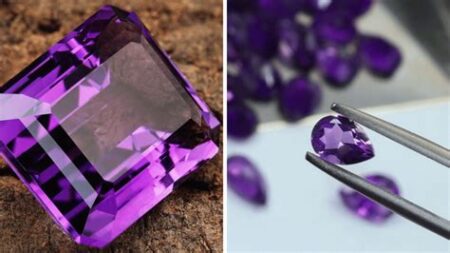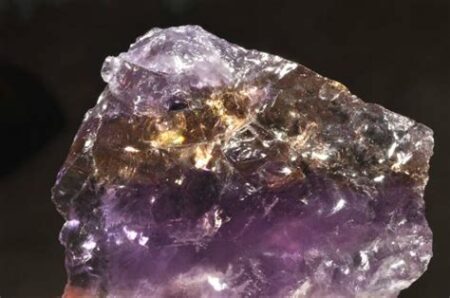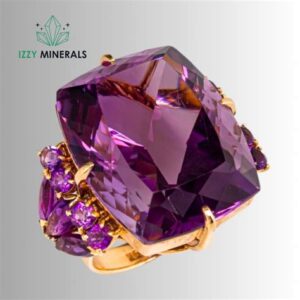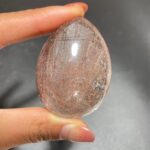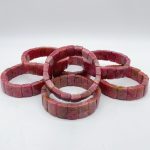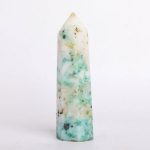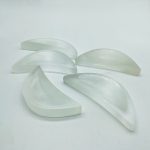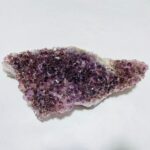Polished stones have captivated human imagination for millennia, serving as adornments, tools, and objects of spiritual significance. Their enduring allure stems from their unique combination of aesthetic charm and practical functionality. In this comprehensive guide, we will delve into the fascinating world of polished stones, exploring their geology, applications, and the latest advancements that are expanding their potential.

Geology and Formation of Polished Stones
Polished stones are primarily formed from metamorphic or sedimentary rocks that have undergone intense heat and pressure deep within the Earth’s crust. These processes transform the original mineral grains into a dense, interlocking crystal structure, resulting in a durable and visually stunning material.
Metamorphic Rocks
Metamorphic rocks, such as marble and slate, originate from pre-existing rocks that have been altered by heat, pressure, or both. The intense conditions within the Earth’s crust cause the minerals in the original rock to recrystallize, forming new minerals with a characteristic layered or banded appearance.
Sedimentary Rocks
Sedimentary rocks, such as limestone and sandstone, are formed when layers of sediments, such as sand, silt, and clay, accumulate and compact over time. The weight of the overlying layers compresses and cements the sediments, resulting in a solid rock. When polished, sedimentary rocks exhibit a rich tapestry of colors and textures, showcasing the diverse composition of the original sediments.
Applications of Polished Stones: Endless Possibilities
The versatility of polished stones extends far beyond their decorative appeal. They possess a wide range of functional properties, making them indispensable in countless applications:
Construction and Architecture
Polished stones are highly durable and resistant to wear and tear, making them ideal for use in construction and architecture. They are commonly used for flooring, countertops, walls, and external cladding, adding a touch of elegance to both residential and commercial buildings.
Art and Sculpture
Polished stones have been used by artists and sculptors for centuries to create stunning works of art. From the delicate carvings of ancient Egypt to the monumental sculptures of modern times, polished stones provide a canvas for artistic expression and imagination.
Jewelry and Accessories
Polished gemstones, such as diamonds, rubies, and sapphires, are highly prized for their beauty and rarity. They are used in jewelry, watches, and other accessories, symbolizing wealth, status, and style.
Industrial and Chemical Processes
Certain polished stones are used in industrial processes due to their specific properties. For example, limestone is used as a flux in the production of steel, while diatomaceous earth is used as a filtration material.
Innovations in Polished Stones
Advancements in technology are constantly expanding the potential of polished stones.
Resin Infiltration
Resin infiltration is a process that involves impregnating polished stones with a clear resin. This treatment enhances the stone’s durability, resistance to stains and scratches, and ease of maintenance.
Digital Imaging
Digital imaging techniques are being used to create realistic and high-quality reproductions of polished stones. These reproductions can be used in place of the original stones, offering cost savings and flexibility in design.
3D Printing
3D printing technology is being explored to create complex and customized polished stones. This enables the production of unique shapes and patterns that were previously impossible to achieve with traditional methods.
Step-by-Step Guide to Polishing Stones
Polishing stones is an artform that requires patience and precision.
Step 1: Preparation
Gather the necessary materials, including a grinder, polishing pads, water, and safety gear. Clean the stone to remove any dirt or debris.
Step 2: Rough Grinding
Use a coarse grinding pad to remove any uneven surfaces and create a smooth base. Use water to prevent overheating and dust.
Step 3: Medium Grinding
Switch to a medium-grit grinding pad to further refine the surface and remove scratches created by the coarse pad.
Step 4: Fine Grinding
Use a fine-grit grinding pad to polish the surface to a high gloss. Apply pressure evenly and move the pad in circular motions.
Step 5: Final Polish
Use a polishing compound and a soft cloth to bring out the stone’s natural luster. Buff the surface gently until it achieves the desired level of shine.
Pros and Cons of Polished Stones
Pros:
- High durability and resistance to wear and tear
- Aesthetically pleasing and can enhance the beauty of any space
- Versatile and can be used in a wide range of applications
- Easy to clean and maintain
Cons:
- Can be expensive, especially for rare or premium stones
- Some stones may require special care and maintenance
- Can be heavy and difficult to install
Customer Needs and Wants
Polished stones fulfill the following customer needs and wants:
- Desire for beauty and elegance in their surroundings
- Need for durable and long-lasting materials
- Aspiration for uniqueness and customization
- Value for money and cost-effectiveness
- Environmental consciousness and sustainability
Table 1: Global Polished Stone Market Value
| Year | Market Value (USD billions) |
|---|---|
| 2021 | 105.2 |
| 2022 | 119.7 |
| 2023 (Projected) | 135.9 |
Source: Grand View Research
Table 2: Top Polished Stone Consumer Countries
| Country | Consumption (metric tons) |
|---|---|
| China | 456,000,000 |
| India | 234,000,000 |
| United States | 123,000,000 |
| Turkey | 74,000,000 |
| Brazil | 68,000,000 |
Source: International Trade Centre
Table 3: Properties of Common Polished Stones
| Stone | Hardness (Mohs Scale) | Density (g/cm³) |
|---|---|---|
| Marble | 3-4 | 2.5-2.9 |
| Granite | 6-7 | 2.6-2.9 |
| Limestone | 3-4 | 2.3-2.7 |
| Slate | 3-4 | 2.7-2.9 |
| Sandstone | 6-7 | 2.0-2.3 |
Source: USGS
Table 4: New Applications for Polished Stones
| Application | Description |
|---|---|
| Stonography | The use of polished stones to create intricate patterns and images |
| Stone Lighting | The integration of polished stones with LED technology to create unique and ambient lighting fixtures |
| Stoneware | The use of polished stones to create innovative and durable tableware and cookware |
| Stoneceuticals | The exploration of polished stones for their potential therapeutic and calming properties |
Conclusion
Polished stones have a rich history and continue to play a vital role in modern society. Their unique blend of beauty and functionality makes them indispensable in countless applications, from construction to art to industrial processes. With ongoing advancements in technology and a growing understanding of their potential, polished stones are poised to expand their reach even further, fulfilling the ever-evolving needs and desires of customers worldwide.

